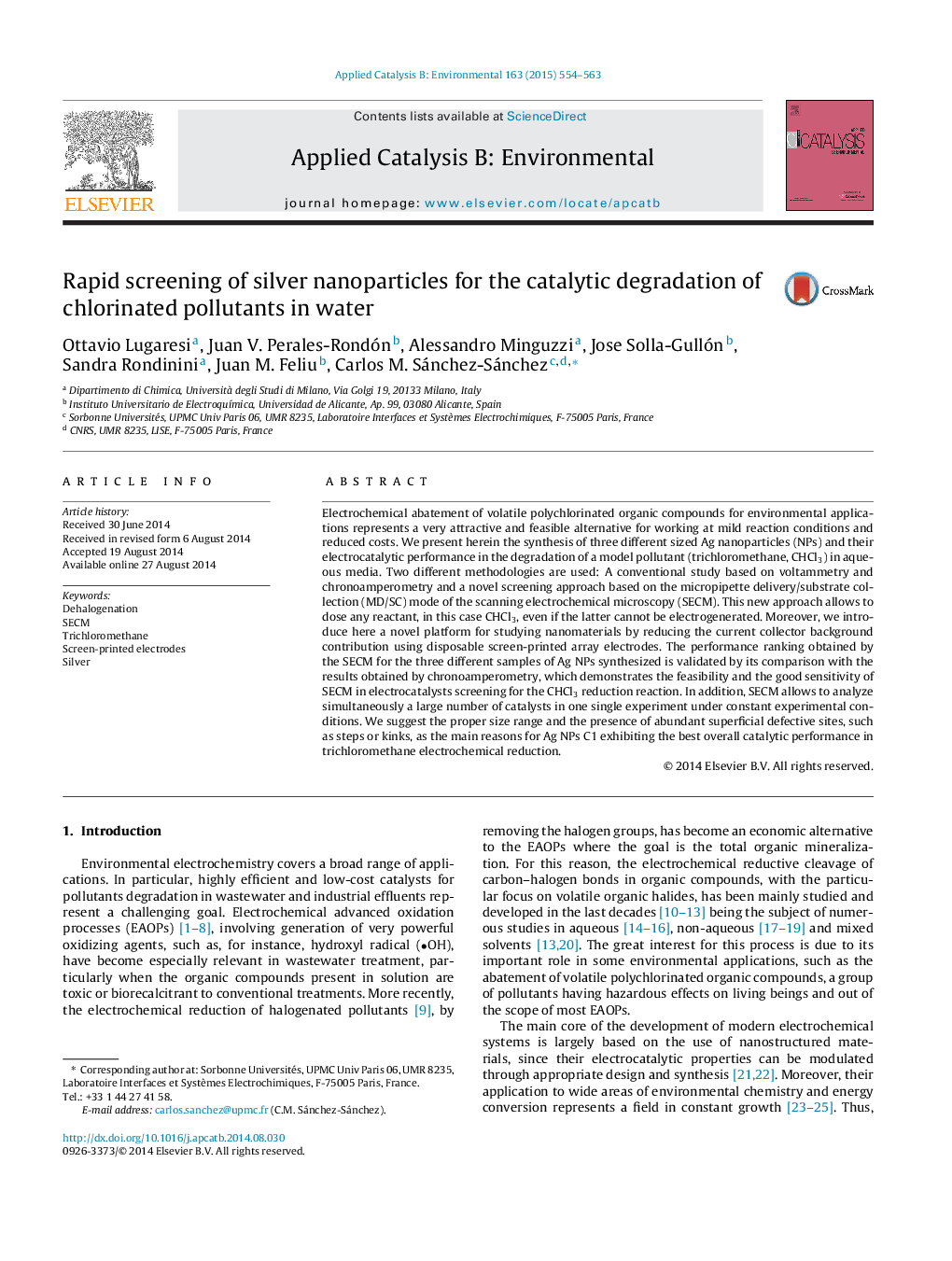| کد مقاله | کد نشریه | سال انتشار | مقاله انگلیسی | نسخه تمام متن |
|---|---|---|---|---|
| 44909 | 46375 | 2015 | 10 صفحه PDF | دانلود رایگان |
• Synthesis of three different sized Ag NPs by a simple wet chemistry method.
• Model volatile pollutant (CHCl3) dehalogenation ranked by chronoamperometry and SECM.
• SECM validated as a electrocatalysts screening tool for environmental applications.
• Disposable screen-printed array electrodes as a novel current collector for nanomaterials.
• Size and presence of defective sites reasons for improving overall catalytic performance.
Electrochemical abatement of volatile polychlorinated organic compounds for environmental applications represents a very attractive and feasible alternative for working at mild reaction conditions and reduced costs. We present herein the synthesis of three different sized Ag nanoparticles (NPs) and their electrocatalytic performance in the degradation of a model pollutant (trichloromethane, CHCl3) in aqueous media. Two different methodologies are used: A conventional study based on voltammetry and chronoamperometry and a novel screening approach based on the micropipette delivery/substrate collection (MD/SC) mode of the scanning electrochemical microscopy (SECM). This new approach allows to dose any reactant, in this case CHCl3, even if the latter cannot be electrogenerated. Moreover, we introduce here a novel platform for studying nanomaterials by reducing the current collector background contribution using disposable screen-printed array electrodes. The performance ranking obtained by the SECM for the three different samples of Ag NPs synthesized is validated by its comparison with the results obtained by chronoamperometry, which demonstrates the feasibility and the good sensitivity of SECM in electrocatalysts screening for the CHCl3 reduction reaction. In addition, SECM allows to analyze simultaneously a large number of catalysts in one single experiment under constant experimental conditions. We suggest the proper size range and the presence of abundant superficial defective sites, such as steps or kinks, as the main reasons for Ag NPs C1 exhibiting the best overall catalytic performance in trichloromethane electrochemical reduction.
Figure optionsDownload as PowerPoint slide
Journal: Applied Catalysis B: Environmental - Volume 163, February 2015, Pages 554–563
